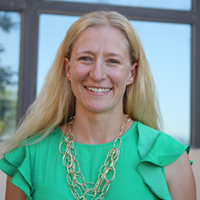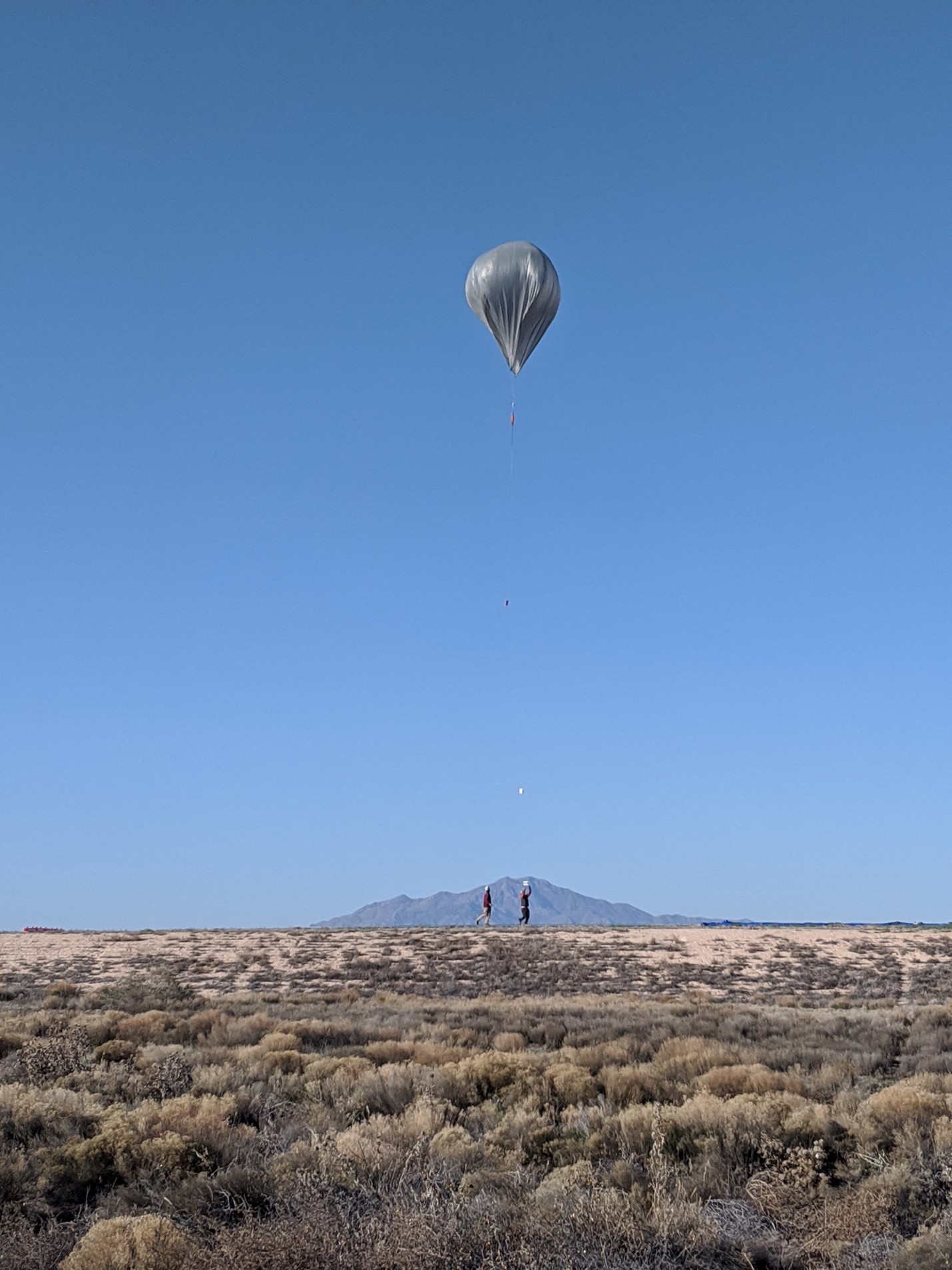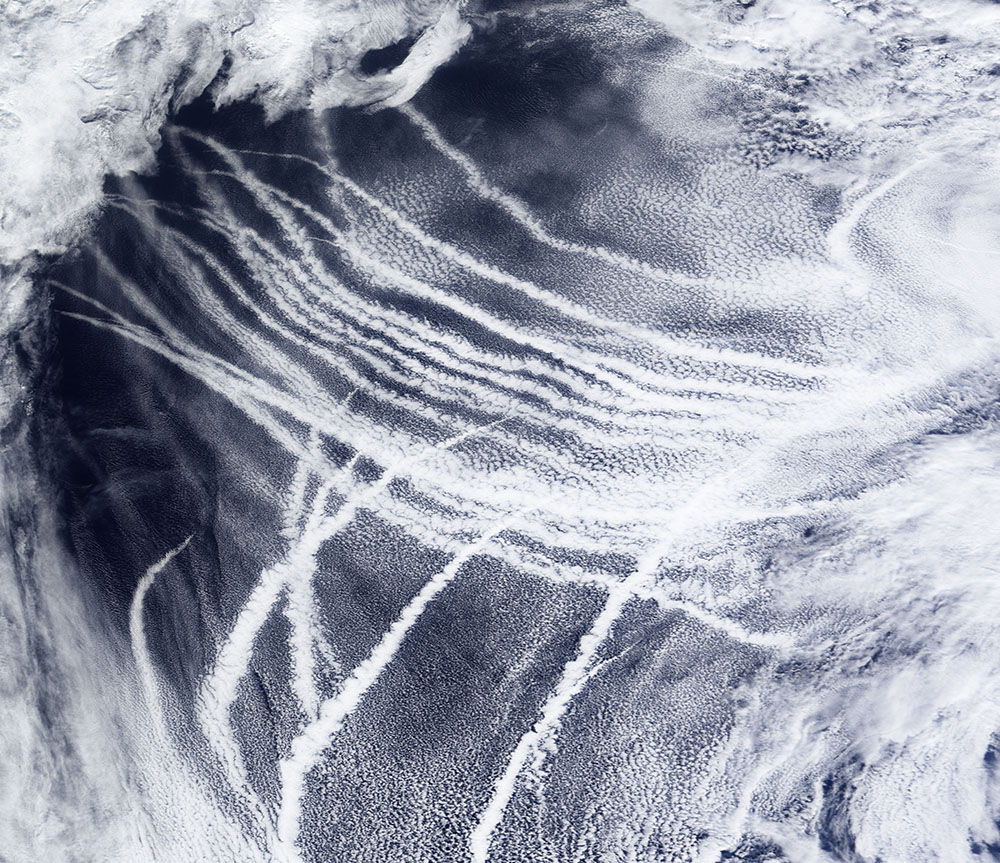A New Mexico scientist lets her curiosity range wide over the Arctic and into the stratosphere
Editor’s note: This is the fourth article in the 2023–2024 series of profiles on members of the ARM User Executive Committee (UEC).

In the summer of 2018, a profile of atmospheric scientist Erika Roesler appeared on the website of the Atmospheric Radiation Measurement (ARM) user facility.
ARM, a U.S. Department of Energy (DOE) Office of Science user facility, operates stationary and mobile atmospheric observatories in climate-critical regions of the world.
The occasion for the profile was to introduce a two-year term Roesler (pronounced “RACE-ler”) had just begun as an early career representative on ARM’s User Executive Committee (UEC). The committee serves as the official voice of ARM users in interactions with facility management.
In late 2022, Roesler was elected to the UEC again, this time to help represent scientists who work with a variety of key ARM data—aerosol and cloud measurements and aerial observations, for instance—as well as researchers who do cloud, global-scale, and high-resolution modeling.
She praises ARM’s 31-year trove of data, as well as the way to get to that trove: ARM’s Data Discovery, “a great interactive resource.”
Roesler, who works at Sandia National Laboratories in New Mexico, is also part of a UEC subgroup that hopes to enhance the communication between ARM and modelers, including those involved with DOE’s Energy Exascale Earth System Model (E3SM).
Addressing Environmental Equity
“(The pandemic) taught us a lot about how people react to really troubling times. With climate change, we might find ourselves facing similar situations.”
Roesler is looking at how researchers could better apply E3SM and other global modeling data to understand potentially extreme future climate conditions that could affect “local municipalities and vulnerable communities,” she says, including settlements in the Arctic at risk from coastal erosion.
In the past few years, she has reflected on how her research could help address environmental equity in the face of climate change.
Luckily, says Roesler, “a lot of cross-disciplinary work with science and engineering” can be brought to bear on the changing climate’s impacts on society and vulnerable communities.
In the years since first joining the UEC, Roesler also reflected on the impact of the intervening pandemic years.
“It taught us a lot about how people react to really troubling times,” she says. “With climate change, we might find ourselves facing similar situations.”
Regionally Refined Models
Since the 2018 profile, Roesler has continued her research on storms in the Arctic, delved into ship-track modeling, poured herself into field investigations using heliotropes (solar-powered balloons), and pivoted into urban risk and resiliency.
DOE profiled her in 2019 for its Women @ Energy series and again in 2020.
Roesler co-authored studies in 2019 on modeling precipitation bias over the central United States and the evolving and widening atmospheric component in E3SM.
She also co-authored a paper illustrating the quest to draw high-resolution simulations into global models.
Such regionally refined models capture details at resolutions of 100 kilometers (about 62 miles) or less. Larger models average out regional observations, blurring the reality of actual conditions.
A current project of Roesler’s, a special configuration of E3SM, uses a grid-like regionally refined “mesh model” over the Arctic. It’s part of a DOE Science Focus Area called High-Latitude Application and Testing of Earth System Models.
Three Years With Heliotropes

Roesler and lab colleagues Lauren Wheeler and Daniel Bowman recently wrapped up a three-year Sandia-funded project to investigate the lower stratosphere.
The “most functional tool” in the project, she says, was the heliotrope, a hot-air balloon flight system “similar to weather balloons.”
Heliotropes can be up to 40 feet wide, but the most useful size was about 20 feet in diameter: wide enough to heft a 6-pound instrument payload more than 70,000 feet above the Earth’s surface.
Each heliotrope, made of polyethylene thinner than a grocery bag, absorbs solar energy, which warms the interior as the balloon rises. Before falling to Earth, these seemingly flimsy heliotropes show they can last longer than weather balloons—staying aloft for up to 12 hours in the summer.
“We proved a technology to measure aerosols in the stratosphere,” says Roesler, “from sources like wildfire plumes and dust lofted above the troposphere.”
Data from such high-altitude measurements, she says, can be used to test atmospheric models in a new way.
Climate Intervention Techniques
The Sandia project investigated the lower stratosphere “to understand and quantify a base state of that layer of the atmosphere,” says Roesler.
As the Earth continues to warm, she explains, “people are talking about solar climate intervention techniques, including stratospheric aerosol injection techniques” aimed to cool the planet.
Recent history provided a natural example of what the injection of particulates into the stratosphere can do. In 1991, after Mount Pinatubo erupted in the Philippines, the resulting haze cooled the Earth’s temperature for two years.
Intentional or not, such injections into the stratosphere can have global effects and last months or years.
Ship Tracks

In related studies during the pandemic, as it happens, Roesler helped investigate climate interventions on a smaller scale.
She helped create a mathematical model of ship tracks, which occur when ship exhaust injects aerosols into the atmosphere.
In a December 2022 paper, authors Lekha Patel and Lyndsay Shand, both Sandia statisticians, acknowledged Roesler’s help.
The idea was to simulate how ship tracks move, how long they last, and how they dissipate.
These cloud-like artifacts are prompted by stack emissions during fossil-fueled marine shipping. They are dramatically evident in satellite images.
Ship tracks have cloud-brightening (cooling) effects similar to those of their natural atmospheric cousins. For that reason, they have become an unintentional proxy for what someday may be intentional technologies that create more planet-cooling marine clouds.
Cooling impacts like those from ship tracks, cautions Roesler, are “very local and very short-lived,” unlike injections into the stratosphere. “Clouds are ephemeral. Their lifetime is much shorter than massive volcanic injections.”
Read UEC profiles of current and past members.
# # #Author: Corydon Ireland, Staff Writer, Pacific Northwest National Laboratory
ARM is a DOE Office of Science user facility operated by nine DOE national laboratories.

